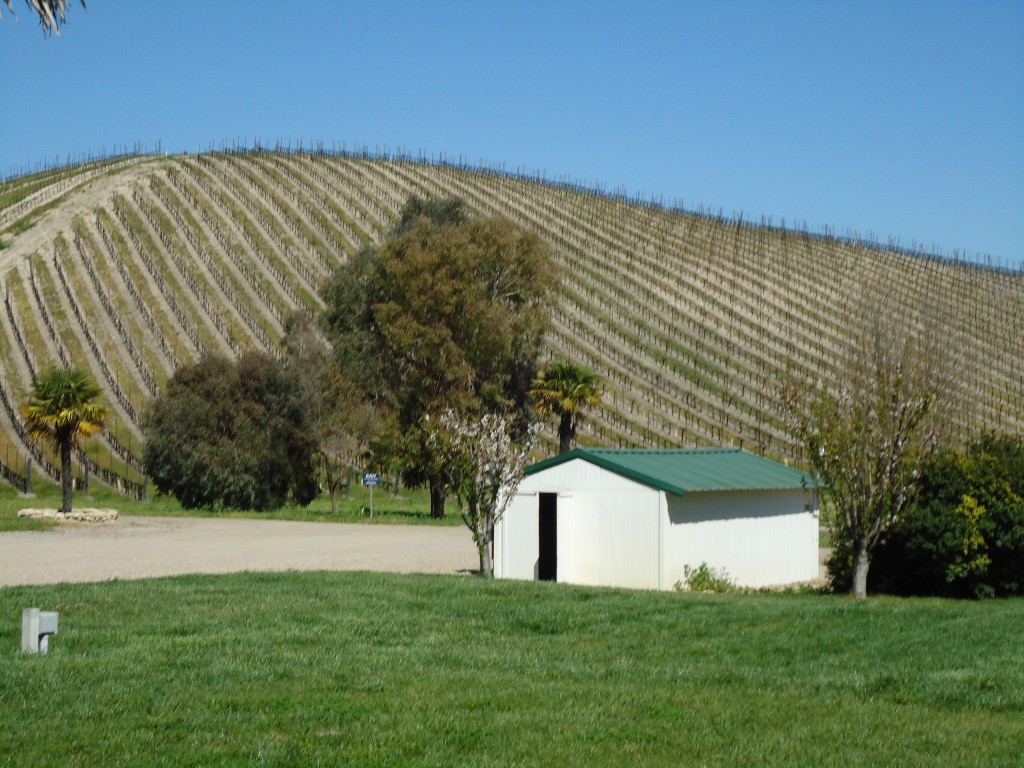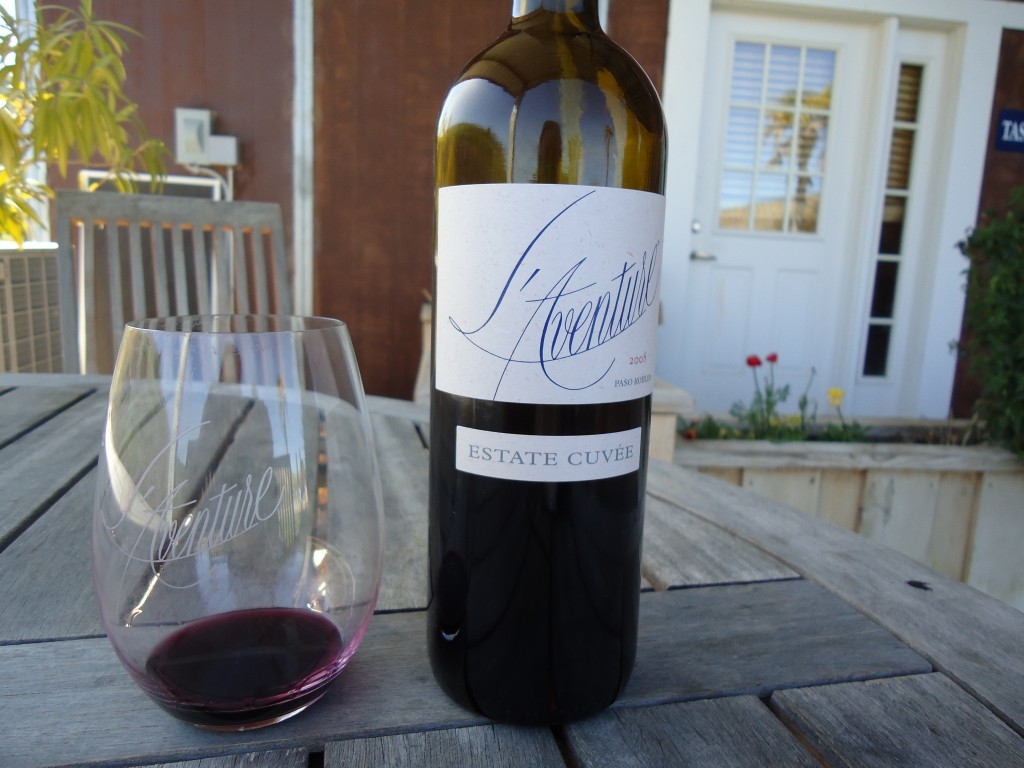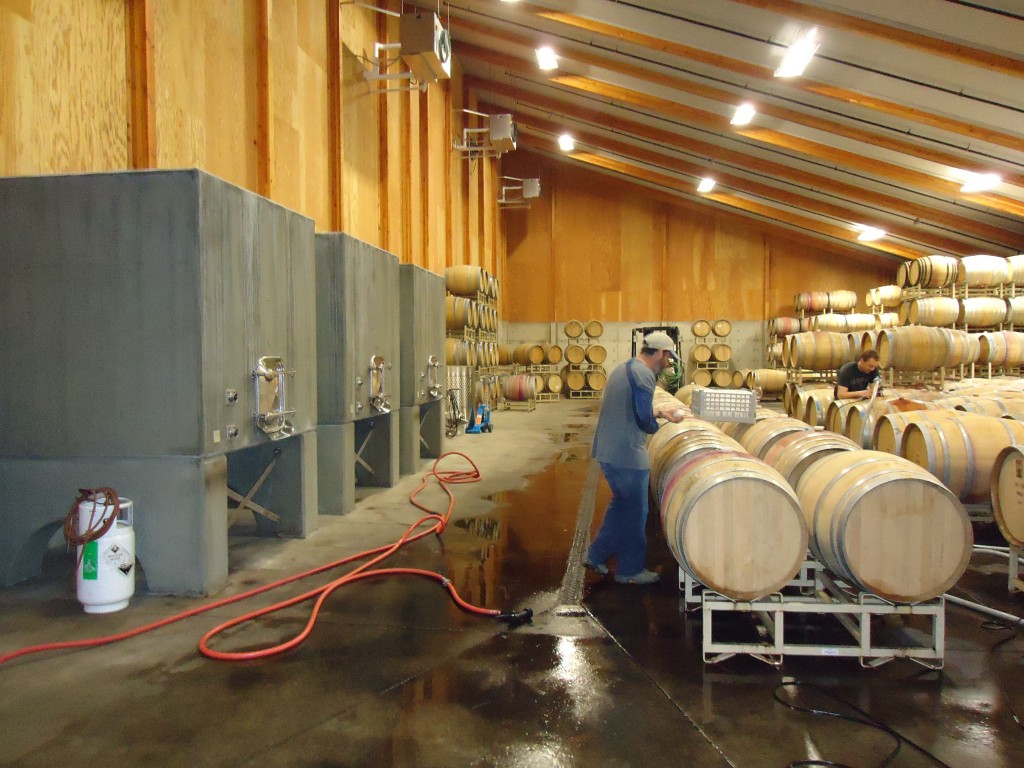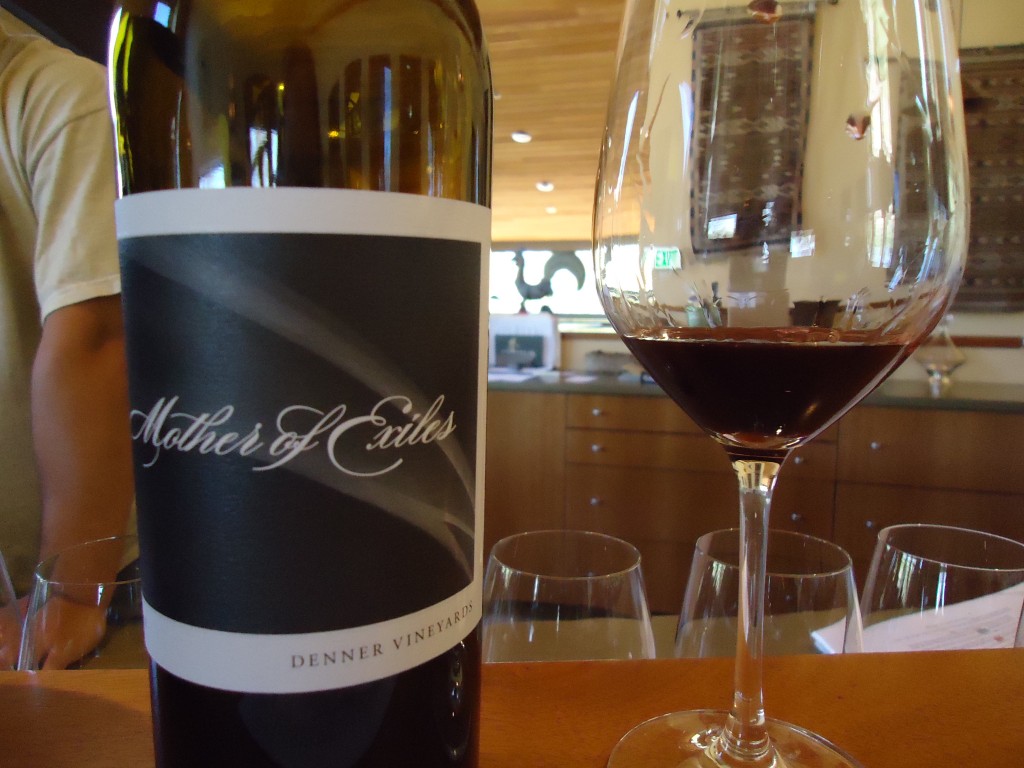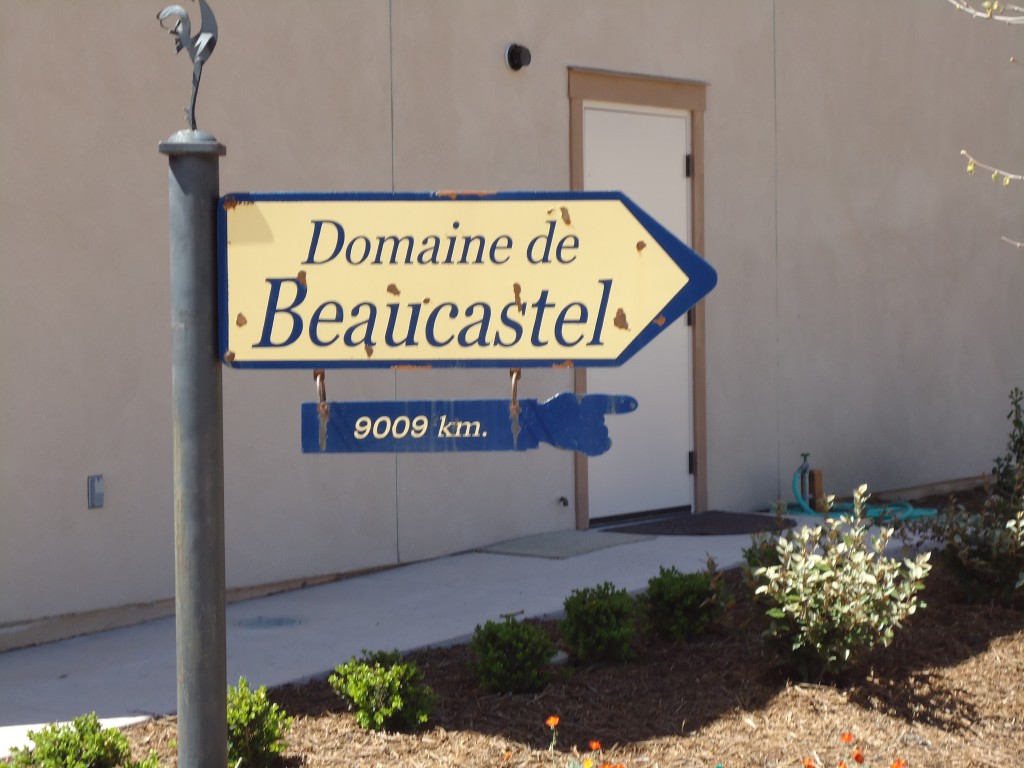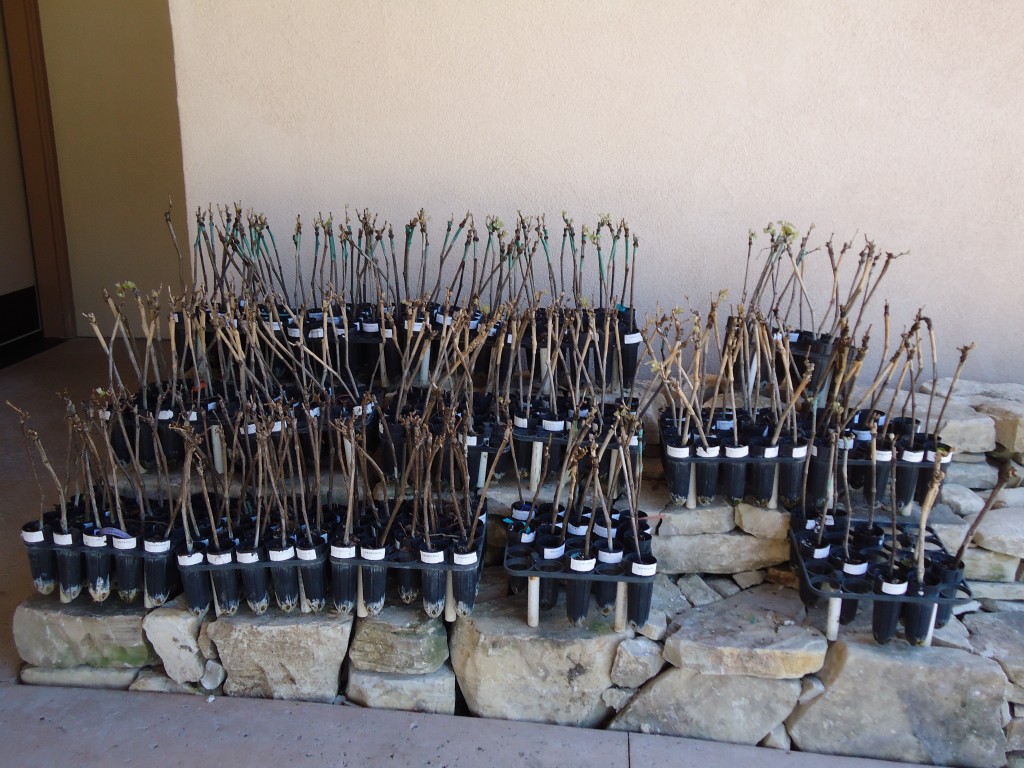Next destination on my wonderful wine trip through California was Paso Robles. I was really excited to visit Paso as a lot of my Californian and International wine friends had been raving about the place. As soon as I drove through the rolling country side I totally understood what they meant. Paso Robles is located in San Luiz Obispo County on the Central Coast. The city is about 50 miles inland and from what I have been told their is a clear dividing line between the areas East and West of highway 101. I focussed on the West side which is generally considered to be the better wine growing region of the two. A lot of vineyards on the West are planted on steep hills, and the cool night breeze from the ocean allows for a very long ripening season, often extending harvest into November. The West side is also the most renowned area for Rhone varieties and Syrah in particular.
The first winery I visited was L’Aventure were the very friendly Sales and Marketing Manager Michael Young took me on a VIP tour.
L’Aventure’s Stephan Asseo, had established himself as an excellent winemaker in Bordeaux, where together with his family he owned several Chateaux. However he had become increasingly frustrated with the AOC blending rules of the area and decided to start all over in the New World. He settled on a 126 acres block just south of Paso Robles.
L’Aventure is all about Terroir – soil, climate and very high density planting. When he first purchased the property, Stephan had the calcareous soils analysed and found out that the 18 different types of soil would be perfect to plant a full range of Rhone varieties as well as Cabernet Sauvignon and Petit Verdot. The maritime influence of the Templeton Gap is responsible for an average diurnal temperature difference of 10 °C, resulting in the grapes keeping up their acid levels and allowing for a long growing season. Stephan is a fan of high density planting with an average of 2,100 to 2,200 vines per acre. The vines are bilateral cordon spur pruned, with 4 spurs per cordon and the yields are kept very low at 1 bunch per spur. The VSP canopy is allowed to grow up to 2 metres. All of this results in optimum phenolic ripeness which can be tasted in the wines. I do have to mention that all that canopy and the small yields also results in a high sugar content at harvest, which in turn results in rather high alcohol wines.
I tasted the following wines:
2010 L’Aventure Estate Rose (70% Syrah, 30 % Cabernet Sauvignon)
Salmony pink coloured, notes of Cavaillon melon and rhubarb on the nose, medium + flavours of strawberry and blackberry, medium + body and alcohol and a lingering crisp finish.
2005 L’Aventure Optimum (51% Syrah, 44% Cabernet Sauvignon, 5% Petit Verdot).
Deep ruby in colour, with aroma’s of boysenberry and mulberry; full and deeply complex wine with flavours of sweet liquorice, blackberry, cigar smoke and hot tar, great tannins and acid, high alcohol and a medium+ finish. Even though the wine was lovely right know I feel it will develop and really come into it’s own with further cellaring.
2008 L’Aventure Estate Cuvée (49% Syrah, 37% Cabernet Sauvignon, 14% Petit Verdot)
Deep purple in colour, with flavours of charred meat, black stewed fruit, tea-leaf and cloves, velvety tannins, good acidity and body, and a lingering and very complex finish. This wine was simply outstanding!
After L’Aventure I went a little further to the west and visited the very modern winery of Linne Calodo – which is named after the predominant type of lime stone clay present in the area. The stone also has been excessively used in the beautifully designed tasting room.
I was lucky enough to visit the winery whilst Matt Trevisan, the owner/winemaker was blending his Nemesis, and was allowed to taste a sample straight from the barrel! I was amazed by the amounts of unusual (fiber glass and cement) tanks present at such a small place. Total production of this winery very rarely exceeds 3000 cases and the bulk of the wine is sold through the wine club and tasting room.
Linne Calodo is famous for it’s Zinfandel /Rhone style blends, but I prefered the excellent GSM’s (Grenache, Mourvedre, Syrah). My top wines were
2009 Linne Calodo Sticks and Stone (64% Grenache, 29% Mourvedre, 7% Syrah)
Pronounced red fruit flavours – ripe strawberry, raspberry – as well as some stewed rhubarb, good body and alcohol, great tannins and a medium + acidity. Hints of clove in the medium+ finish.
2009 Linne Calodo Rising Tide (40% Mourvedre, 30% Syrah, 30% Grenache)
A very rounded complex wine, with a great tannin structure, high acid, medium+ alcohol and body and flavours of black cherry, boysenberry, sweet liquorice and dried fig and a long leathery finish.
I am sure the wine would age wonderfully and to test my theory I bought a bottle and brought it back:-)
2008 Linne Calodo Screwball (70% Syrah, 15% Grenache, 16% Mourvedre)
Rich wine, with velvet tannins, medium body and alcohol and flavours of blackberry, mulberry, dried fig and hazelnut and a caramel coffee finish.
Denner, another small winery not too far from Linne Calodo was were I stopped next. Denner produces 4600 cases and all the fruit comes from the Estate. Only 5% is distributed, the other 95% are sold from the cellar door or the wine club. Again the wines were of outstanding quality – Anthony Yount, Denner’s winemaker, really had done an brilliant job! – and my favourites were:
2010 Denner Vineyards Viognier
Elegant, dry very well balanced wine with flavours of lemon curd, peach and ripe pear, good acidity, medium body and alcohol and a long finish.
2009 Denner Vineyard Ditch Digger (blend of Grenache, Syrah, Mourvedre, Cincault and Counoise)
Another great Rhone blend with flavours of red cherry, raspberry, cinnamon and vanilla, medium body, alcohol and tannin, and a medium + liquorice finish.
2008 Denner Vineyards Mother of Exile (70% Cabernet Sauvignon, 20% Petit Verdot, 10% Cabernet Franc)
Complex wine with flavours of black cherry, hazelnut and little eucalyptus, high acid and tannins, medium+ body and alcohol and a long leathery spicy finish.
This is one of the most interesting wines I have ever tasted, and I still regret not having bought a bottle as I really think I would have liked to revisit this wine in a few years.
The last winery I visited had to be the legendary Tablas Creek. Tablas Creek is a joint venture between the Perrin family who own the renowned Chateau Neuf de Pape Domaine de Beaucastel and Robert Haas the owner of Vineyard Brands, the Beaucastel US importer. In 1987 they settled on the 120 acres Tablas Creek property and started to import the original Rhone varieties from France. A nursery to propagate the French clones was set up and all the Rhone varieties at the other 3 Paso wineries I visited were purchased from the Tablas Creek nursery. At the moment the nursery has 9 of the 13 original varieties whilst the last 6 should be shortly released from quarantine.
Tablas Creek has been farmed organically since 2003 and have currently 100 acres under vines.
I tasted at least 10 different wines and all of then were great but these were my favourites:-)
Tablas Creek 2009 Esprit de Beaucastel Blanc (62% Roussanne, 26% Grenache Blanc, 12% Picpoul Blanc)
Dry full bodied white whine with medium acid and alcohol and flavours of Meyer lemon, nectarine and a little red apple, a little creaminess on the middle palate and and a lingering finish.
Tablas Creek 2006 Esprit de Beaucastel (45% Mourvèdre, 28% Grenache, 22% Syrah, 5% Counoise)
Rich wine with velvet tannins, medium body and alcohol and flavours of boysenberry, cassis, blackberry, a delicious spiciness and a long chocolate/walnut finish
Tablas Creek 2008 Tannat
Highly tannic, high acidity and medium + bodied wine with bright flavours of cherries, blueberry and a little black chocolate in the finish. This wine will soften and open up with aging and I was just fascinated to try a 100% Californian Tannat:-)

